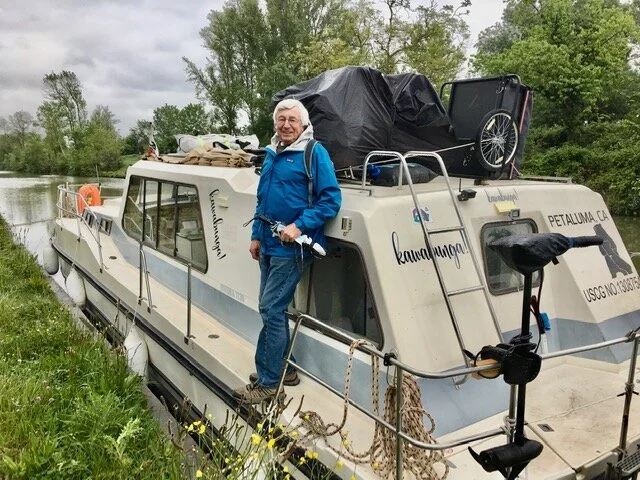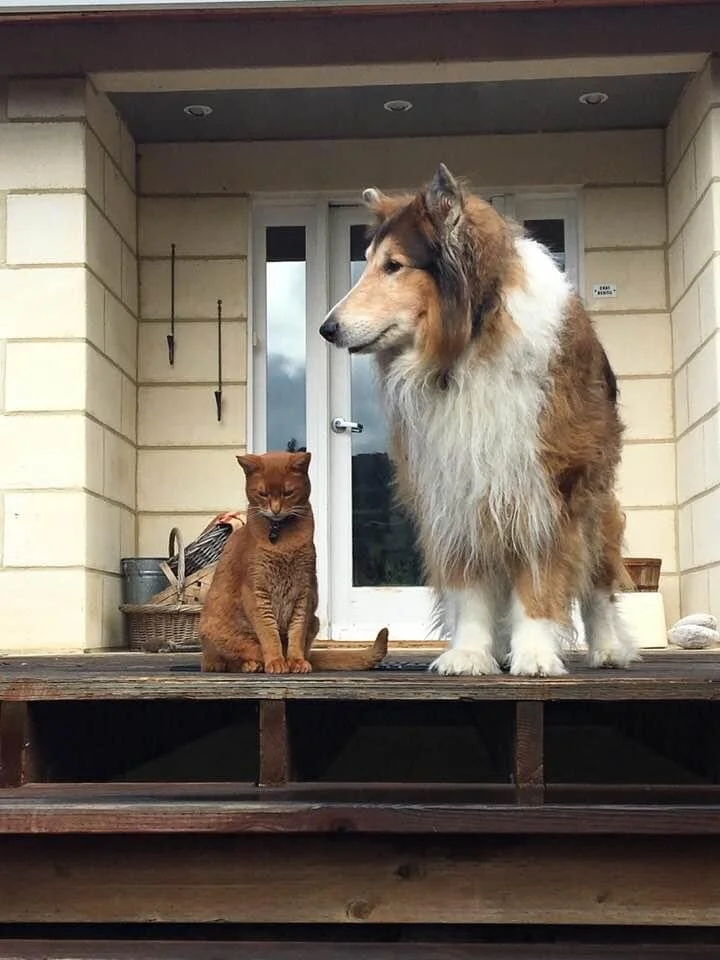Road Trip / Vagabondage
/ENGLISH
We are getting used to the fickle whims and ways of the Rhône: Commercial barge traffic, intimidating locks, and what Kawabunga can handle regarding the river current and wind gusts. We should be in Lyon in a week or less. In the meantime, we have been in Valence for a week and took advantage of this secure marina to safely leave Kawabunga and rented a car. We criss-crossed from the Drôme, to Ardèche, to the Hautes Alpes, and to Isère “departements” visiting some amazing areas.
Recap: It’s been hot here too!
• Avignon to Viviers, a long, slow stretch but rewarding as we discovered the pleasant, and incredibly historical village of Viviers (but aren’t they all?)
• Viviers to Valence: Valence itself is nothing to hoot about. It seems to be ‘twixt and ‘tween in identities: occasional architectural hints of the south of France, but with some northern influences as well. Already the deep southwest French accent is much dissipated here.
• Road trip: Crossing the Rhône to the west, we went to Grotte Chauvet. Wow!!! If you know of Lascaux in the Dordogne, this amazing “labyrinth-esque” huge prehistoric cave with extremely well-intact drawings and bones was only discovered in 1994 by 3 French speleologists in the Gorges d’Ardèche. Once the scientific community realized how extraordinary this find was, the state immediately sealed it off to prevent degradation as has happened with other tourist-frequented grottes. An identical reproduction was built several miles away which opened to the public in 2015. And while not the real thing, one quickly forgets that as the site is extremely realistic with a well-organized visit led by passionate, knowledgeable professionals. We also visited:
The Gorges d’Ardèche
Recrossed the Rhône to the east, visiting the town of Nyons, then up to Gap where we saw our first of the Alps!
Unintentional discovery of the surprising village of Corps, as we almost just drove through then decided to spend the night as it was getting late. The hotel was literally on the curve of the major highway that cuts through town but distinguished itself with an amazing gourmet restaurant. Just a few streets behind the main drag, Corps revealed itself to be a little historical gem.
Up to Grenoble, more Alps!
Between Grenoble and Valence lies the region of Vercors, a high plateau with breathtaking gorges and rocky outcroppings. A stronghold for the French Resistance during WWII whose history alone is quite amazing, little-known, and alarming, it has given way today as an outdoor destination for biking, hiking, climbing, canyoneering, and rafting.
Now back in Valence, taking care of business (laundry, grocery shopping, fuel and water fill-ups), we’ll be off again very soon.
FRANÇAIS
Nous commençons à nous habituer aux caprices du Rhône : Le trafic des péniches commerciales, les écluses intimidantes, et ce que Kawabunga peut encaisser en ce qui concerne le courant du fleuve et les rafales de vent. Nous devrions être à Lyon dans une semaine ou moins. En attendant, nous sommes à Valence depuis une semaine et avons profité de cette marina sécurisée pour quitter Kawabunga en toute sécurité et louer une voiture. Nous avons sillonné la Drôme, l'Ardèche, les Hautes Alpes, et les départements de l'Isère en visitant des endroits étonnants.
Récapitulation : Ici aussi, il a fait chaud !
• Avignon à Viviers, un long et lent trajet mais gratifiant car nous avons découvert l'agréable et incroyablement authentique village médiéval de Viviers (mais ne le sont-ils pas tous ?).
• Viviers à Valence : Valence lui-même n'a rien d'extraordinaire. La ville semble se situer entre deux identités : des allusions architecturales occasionnelles au sud de la France, mais aussi quelques influences du nord. Le profond accent français du sud-est s'est déjà beaucoup dissipé.
• Voyage en voiture : En traversant le Rhône vers l'ouest, nous sommes allés à la Grotte Chauvet. Wow !!! Si vous connaissez Lascaux en Dordogne, cette énorme grotte préhistorique "labyrinthique" avec des dessins et des ossements extrêmement bien conservés n'a été découverte qu'en 1994 par trois spéléologues français dans les Gorges de l'Ardèche. Lorsque la communauté scientifique s'est rendu compte du caractère extraordinaire de cette découverte, l'État l'a immédiatement fermée pour empêcher sa dégradation, comme cela s'est produit pour d'autres grottes fréquentées par les touristes. Une reproduction identique a été construite à quelques kilomètres de là et a été ouverte au public en 2015. Et bien que ce ne soit pas la vraie, on l'oublie vite car le site est extrêmement réaliste avec une visite bien organisée et menée par des professionnels passionnés et compétents. Nous avons également visité :
Traversée du Rhône vers l'est, visite de la ville de Nyons, puis montée à Gap où nous avons vu nos premières Alpes !
Découverte involontaire du surprenant village de Corps, que nous avons failli traverser en voiture avant de décider d'y passer la nuit car il se faisait tard. L'hôtel se trouvait littéralement dans le virage de la grande route qui traverse le village mais se distinguait par un restaurant gastronomique étonnant. A quelques rues derrière la rue principale, Corps s'est révélé être un petit bijou historique.
Jusqu'à Grenoble, encore les Alpes !
Entre Grenoble et Valence se trouve la région du Vercors, un haut plateau avec des gorges et des affleurements rocheux à couper le souffle. Bastion de la Résistance française pendant la Seconde Guerre mondiale, dont l'histoire est à elle seule étonnante, méconnue et inquiétante, il est aujourd'hui devenu une destination de plein air pour le vélo, la randonnée, l'escalade, le canyoning et le rafting.
De retour à Valence, nous reprenons notre rythme avec lessive, courses, plein de diesel et d'eau avant notre très prochain départ.
Port of Valence
Maison Mauresque in Valence, no real historical significance; it was someone’s fanciful dream of a house once-upon-a time
Mom, Dad, and the little ones paid Kawabunga a visit while in the marina in Valence
Replica of Chauvet, interesting architecturally in itself
Gorges d’Ardèche, Pont d’Arc, near where the actual Grotte Chauvet exists (now with a special door, locked, hidden, and inaccessible).
Gorges d’Ardèche
More Gorges d’Arcèche
Just on the road…
Town of Nyons
More Nyons
Our first glimpse of the Alps!
City of Gap, pleasant pedestrian center, jumping off point for explorations, climbing, hiking, etc.
Gap
Just outside of Gap, on a little 6 km hike to the Pic de Gleize
View from the Pic de Gleize
Proof of the hike!
Village of Corps, on our way to Grenoble
Napoleon slept here in Corps on his return to France from exile in Elbe, on his way to Grenoble
View of some of the Alps from Corps
More views
Grenoble from the Bastille
Grenoble
in the Gorges of Vercors
Vercors
Vercors
Plateau de Vercors where some of the mountain biking takes place
Vercors
French Resistance massacre Memorial de Vassieux
One of the dozens of German gliders that landed on the Vassieux airfield July 21 1944 (that the Resistance had prepared for the Allied forces) bringing some of the 14,000 Germans troops that ambushed and massacred the Vercors Resistance and obliterated Vassieux, executing 200 of the villagers without mercy: women, children, and the aged.




















































































